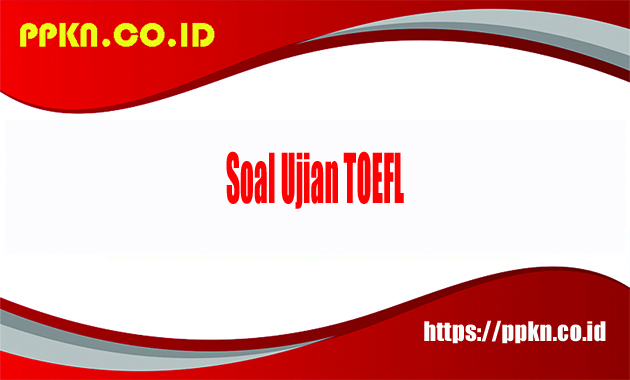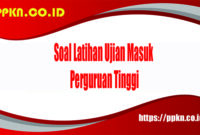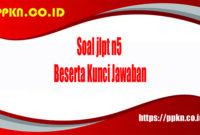Contoh Soal TOEFL dan Kunci Jawabannya

1. What is the main purpose of the passage?
a. To inform readers about the history of ancient civilizations
b. To describe the architecture of modern buildings
c. To compare and contrast ancient and modern construction techniques
d. To persuade readers to visit historical sites
2. The word “pristine” in paragraph 2 could best be replaced by which of the following?
a. polluted
b. untouched
c. crowded
d. developed
3. Which of the following best describes the author’s attitude toward technology in the passage?
a. Skeptical
b. Neutral
c. Enthusiastic
d. Dismissive
4. According to the passage, which of the following is NOT a characteristic of a healthy lifestyle?
a. Regular exercise
b. Proper nutrition
c. Chronic stress
d. Sufficient sleep
5. The word “alleviate” in paragraph 3 is closest in meaning to:
a. intensify
b. worsen
c. reduce
d. ignore
6. What is the main idea of the third paragraph?
a. The importance of sleep for mental health
b. The effects of chronic stress on the body
c. The benefits of a balanced diet
d. The impact of technology on sleep patterns
7. Which of the following statements is supported by the passage?
a. Modern technology has no impact on lifestyle choices.
b. Chronic stress can lead to physical health problems.
c. Eating junk food is essential for a balanced diet.
d. Exercise has no effect on mental well-being.
8. In paragraph 4, the word “sedentary” is closest in meaning to:
a. active
b. stationary
c. energetic
d. flexible
9. According to the passage, what effect does exercise have on mental health?
a. It worsens anxiety.
b. It can alleviate depression.
c. It has no impact on mood.
d. It causes chronic stress.
10. The passage suggests that a lack of balance in one’s lifestyle can lead to:
a. enhanced productivity
b. improved cognitive function
c. various health issues
d. increased life expectancy
11. What is the main purpose of the experiment described in the passage?
a. To prove that caffeine is harmful
b. To determine the effects of sleep deprivation
c. To promote the consumption of energy drinks
d. To investigate the benefits of napping
12. In the experiment, what was the purpose of the control group?
a. To drink caffeinated beverages
b. To sleep for 8 hours
c. To consume a placebo
d. To avoid caffeine
13. According to the results of the experiment, participants who napped:
a. performed worse on cognitive tests
b. showed no improvement in alertness
c. experienced a decrease in reaction time
d. had better memory recall
14. What can be inferred about the participants who consumed caffeine?
a. They were less alert than the control group.
b. They performed better on cognitive tests.
c. They experienced no negative effects of sleep deprivation.
d. They were more likely to nap during the day.
15. The word “deteriorated” in paragraph 2 could best be replaced by:
a. improved
b. enhanced
c. declined
d. stabilized
16. Which of the following is NOT mentioned as a factor that influences memory in the passage?
a. Genetics
b. Sleep
c. Diet
d. Exercise
17. According to the passage, what happens during the REM stage of sleep?
a. Muscle activity increases
b. Dreaming occurs
c. Breathing becomes irregular
d. Blood pressure rises
18. The word “impairs” in paragraph 3 is closest in meaning to:
a. enhances
b. improves
c. hinders
d. strengthens
19. What is the main idea of the fourth paragraph?
a. The benefits of napping
b. The importance of REM sleep
c. The effects of caffeine on alertness
d. The connection between sleep and memory
20. Which of the following best describes the relationship between sleep and memory, as discussed in the passage?
a. Sleep has no impact on memory formation.
b. REM sleep is essential for memory consolidation.
c. Memory improves with sleep deprivation.
d. Napping impairs memory recall.
21. The word “regenerate” in paragraph 2 could best be replaced by:
a. damage
b. repair
c. hinder
d. worsen
22. According to the passage, what is the role of glial cells during sleep?
a. They regulate breathing
b. They repair neural connections
c. They produce neurotransmitters
d. They promote wakefulness
23. Which of the following statements is supported by the passage?
a. Memory consolidation occurs during wakefulness.
b. Sleep is not essential for cognitive function.
c. Glial cells are inactive during sleep.
d. Sleep deprivation has no effect on memory.
24. What can be inferred about individuals who regularly experience sleep deprivation?
a. They have better memory recall.
b. They are at risk for cognitive impairment.
c. They require less sleep than others.
d. They are more productive during the day.
25. The word “detrimental” in paragraph 4 is closest in meaning to:
a. beneficial
b. harmful
c. advantageous
d. negligible
26. According to the passage, what effect does sleep deprivation have on cognitive function?
a. It improves memory consolidation.
b. It enhances problem-solving abilities.
c. It impairs decision-making skills.
d. It has no impact on attention span.
27. What is the main idea of the fifth paragraph?
a. The role of glial cells in memory formation
b. The effects of sleep deprivation on cognitive function
c. The importance of REM sleep for physical health
d. The connection between sleep and dreaming
28. The word “cognitive” in paragraph 2 is closest in meaning to:
a. physical
b. mental
c. emotional
d. social
29. According to the passage, what is the primary function of REM sleep?
a. To regulate breathing
b. To repair neural connections
c. To promote wakefulness
d. To support memory consolidation
30. The word “essential” in paragraph 3 is closest in meaning to:
a. optional
b. necessary
c. luxurious
d. sporadic
31. What can be inferred about individuals who experience REM sleep behavior disorder?
a. They are unable to dream.
b. They are more likely to sleepwalk.
c. They experience better sleep quality.
d. They have an overactive bladder.
32. According to the passage, what is the purpose of dreaming during REM sleep?
a. To process emotions and memories
b. To regulate body temperature
c. To enhance problem-solving abilities
d. To promote physical health
33. The word “disorder” in paragraph 5 is closest in meaning to:
a. problem
b. treatment
c. solution
d. examination
34. What is the main idea of the sixth paragraph?
a. The importance of REM sleep for emotional well-being
b. The effects of REM sleep behavior disorder on physical health
c. The relationship between dreaming and memory consolidation
d. The prevalence of sleep disorders among the elderly
35. The word “inhibits” in paragraph 2 is closest in meaning to:
a. promotes
b. prevents
c. enhances
d. improves
36. According to the passage, what effect does REM sleep have on emotional processing?
a. It has no impact on emotional well-being.
b. It exacerbates negative emotions.
c. It facilitates emotional regulation.
d. It impairs cognitive function.
37. What can be inferred about individuals with REM sleep behavior disorder?
a. They experience vivid dreams.
b. They are less likely to develop dementia.
c. They have improved cognitive function.
d. They are unaffected by sleep disturbances.
38. The word “culprit” in paragraph 3 is closest in meaning to:
a. cause
b. victim
c. effect
d. result
39. According to the passage, what is one possible cause of REM sleep behavior disorder?
a. Genetics
b. Exercise
c. Diet
d. Aging
40. What is the main idea of the seventh paragraph?
a. The effects of aging on sleep patterns
b. The prevalence of REM sleep behavior disorder
c. The benefits of REM sleep for cognitive function
d. The relationship between sleep disorders and dementia
41. The word “profound” in paragraph 3 is closest in meaning to:
a. shallow
b. deep
c. slight
d. mild
42. According to the passage, what is the relationship between REM sleep and dementia?
a. REM sleep reduces the risk of dementia.
b. REM sleep is a symptom of dementia.
c. REM sleep exacerbates the symptoms of dementia.
d. REM sleep disorders may precede dementia.
43. Which of the following statements is supported by the passage?
a. Dreaming only occurs during REM sleep.
b. Glial cells are inactive during sleep.
c. Sleep disorders have no impact on cognitive function.
d. Aging improves sleep quality.
44. The word “precede” in paragraph 7 is closest in meaning to:
a. follow
b. coincide
c. succeed
d. anticipate
45. According to the passage, what is one consequence of disrupted REM sleep?
a. Enhanced cognitive function
b. Improved emotional regulation
c. Increased risk of depression
d. Decreased risk of dementia
46. The word “plausible” in paragraph 4 is closest in meaning to:
a. possible
b. unlikely
c. certain
d. definite
47. What can be inferred about the relationship between sleep disorders and dementia?
a. Sleep disorders are a result of dementia.
b. Dementia increases the risk of sleep disorders.
c. Sleep disorders have no impact on dementia.
d. Sleep disorders may contribute to the development of dementia.
48. According to the passage, what effect does aging have on REM sleep?
a. It increases REM sleep duration.
b. It decreases REM sleep duration.
c. It has no impact on REM sleep.
d. It eliminates REM sleep entirely.
49. The word “notably” in paragraph 6 is closest in meaning to:
a. particularly
b. obscurely
c. irrelevantly
d. significantly
50. Which of the following statements is supported by the passage?
a. Sleep disorders are uncommon among the elderly.
b. REM sleep behavior disorder is a normal part of aging.
c. REM sleep is essential for physical health but not cognitive function.
d. Disrupted REM sleep may contribute to cognitive decline in older adults.
Kunci Jawaban
1. c
2. b
3. a
4. c
5. c
6. a
7. b
8. b
9. b
10. c
11. b
12. c
13. c
14. b
15. c
16. a
17. b
18. c
19. d
20. b
21. b
22. b
23. d
24. b
25. b
26. c
27. b
28. b
29. d
30. b
31. b
32. a
33. a
34. a
35. b
36. c
37. a
38. a
39. a
40. d
41. b
42. d
43. a
44. a
45. c
46. a
47. d
48. b
49. a
50. d
Demikian ulasan dari PPKN.CO.ID Mengenai Soal Ujian TOEFL,Semoga Bermanfaat
Refrensi Teknologi [DISINI]
Recent Post
- Soal Ujian CPA
- Ancaman Non Militer
- Uji Kompetensi 5 PKN Kelas 7
- Soal Pemasaran Online Kelas 11
- Teks Laporan Hasil Observasi
- Jelaskan Pengertian Teks Deskripsi
- Soal Akuntansi Kelas 10 SMK
- Soal Multimedia Kelas 10
- Uji Kompetensi Bab 5 PKN Kelas 9
- Soal Informatika Kelas 12
- Contoh Surat Cuti Kerja
- Contoh Surat Izin Tidak Masuk Kuliah Lewat WA
- Soal Pemasaran Online Kelas 12
- Soal Broadcasting
- Integrasi Nasional Dalam Bingkai Bhinneka Tunggal Ika


